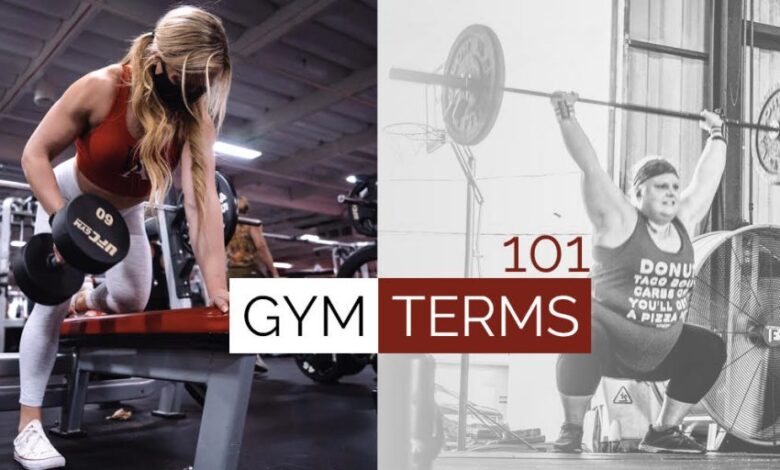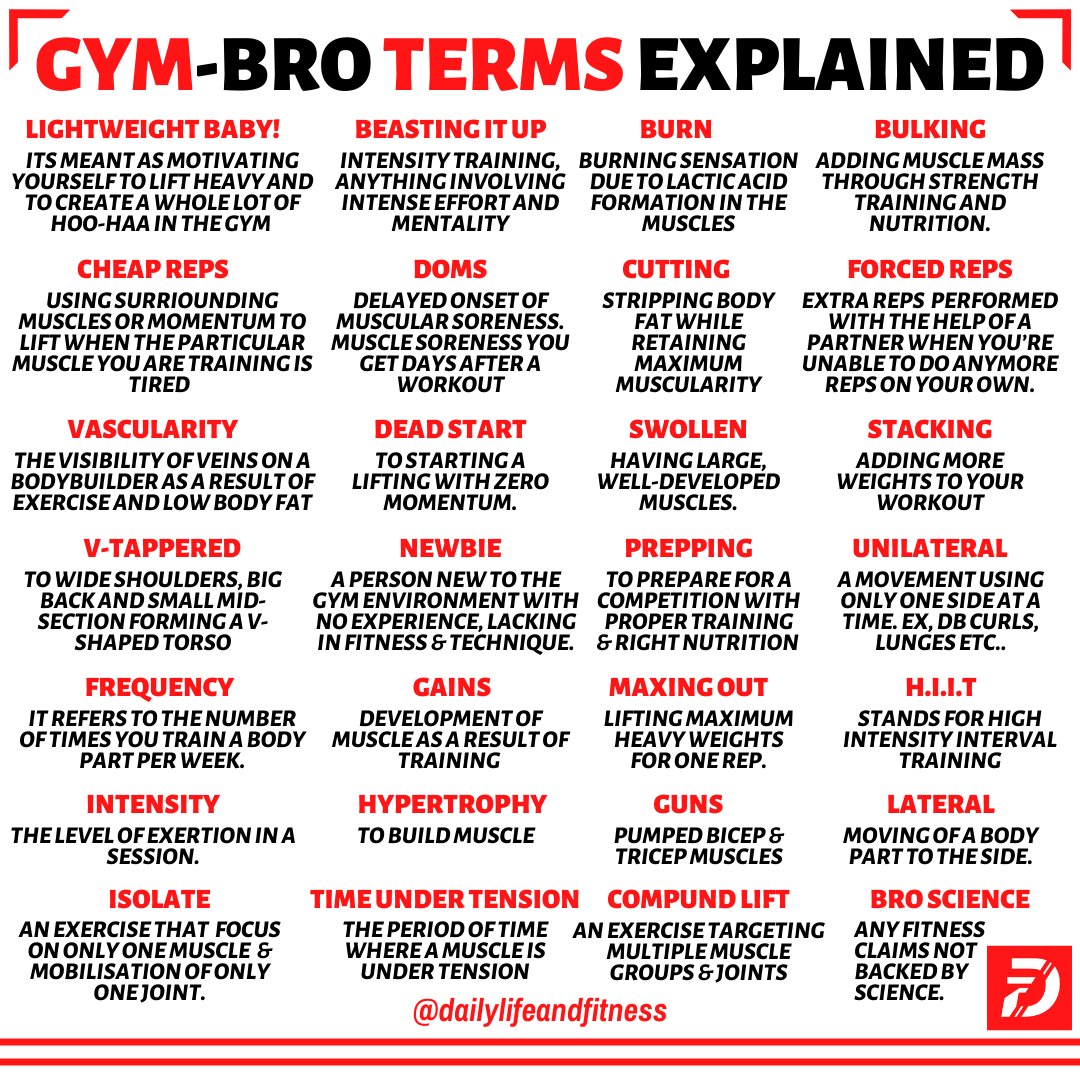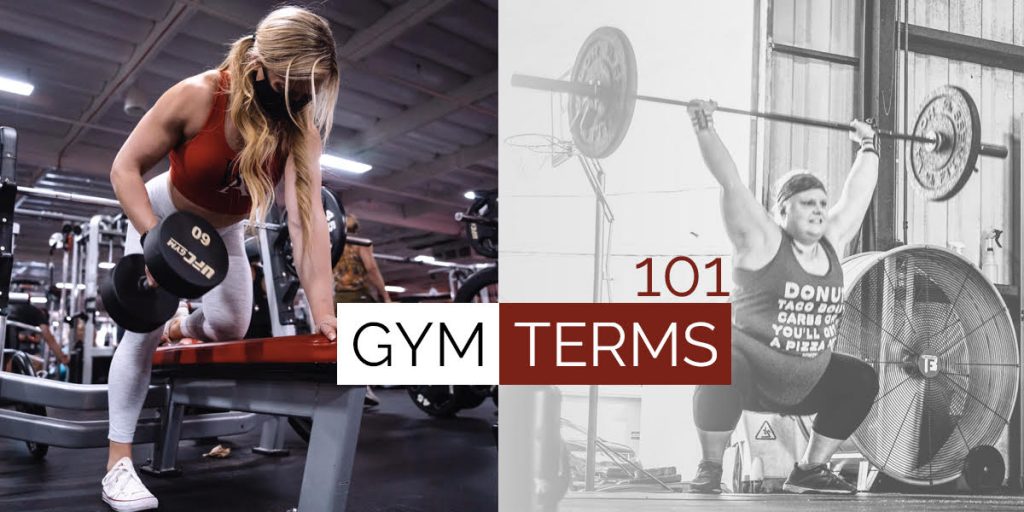
26 Fitness Terms Every Gymgoer Needs to Know
26 Fitness Terms Every Gymgoer Needs to Know – stepping into a gym can feel like entering a whole new language. From “reps” to “macros,” the fitness world is filled with jargon that can leave even the most seasoned gym-goer feeling lost.
But don’t worry, understanding these terms is key to maximizing your workouts, reaching your fitness goals, and making the most of your gym experience.
This comprehensive guide will break down 26 essential fitness terms, covering everything from basic concepts to advanced techniques, anatomy, nutrition, and equipment. Whether you’re a beginner just starting your fitness journey or a seasoned gym rat looking to expand your knowledge, this glossary will help you navigate the gym with confidence and understanding.
Fitness Goals and Progress Tracking: 26 Fitness Terms Every Gymgoer Needs To Know
Setting clear fitness goals and tracking your progress is crucial for staying motivated and seeing tangible results. Understanding key terms related to fitness progress will help you make informed decisions and achieve your fitness objectives.
Body Composition
Body composition refers to the percentage of lean mass (muscle, bone, and water) and fat mass in your body. Understanding your body composition is vital for assessing your fitness progress.
- Lean massis the active tissue in your body that helps you burn calories and build strength. It includes muscle, bone, and water.
- Fat massis the stored energy in your body, providing insulation and cushioning for organs. While some fat is essential for body function, excess fat can lead to health problems.
Progress Tracking
Progress tracking involves monitoring your fitness journey to assess your improvements and identify areas for adjustments. Consistent tracking helps you stay motivated, celebrate milestones, and make necessary changes to your fitness plan.
- Track your workouts:Record the exercises you perform, the weight you lift, the number of repetitions, and the duration of your workouts. This data will help you see how your strength and endurance are improving over time.
- Monitor your body measurements:Regularly measure your weight, waist circumference, and other relevant body measurements to assess changes in your body composition.
- Take progress photos:Capture photos of yourself at regular intervals to visually track changes in your physique. This can be a powerful motivator and provide a tangible representation of your progress.
- Keep a fitness journal:A journal can serve as a comprehensive record of your fitness journey, including your goals, workouts, nutrition, and reflections on your progress.
Plateau
A plateau is a period where you experience a slowdown or stagnation in your fitness progress. This is a common occurrence, and it doesn’t necessarily mean you’re doing something wrong. Plateaus can be caused by various factors, including:
- Overtraining:When you push your body too hard without adequate rest, your body may enter a state of adaptation, leading to a plateau.
- Lack of proper nutrition:Insufficient calorie intake or inadequate macronutrient ratios can hinder muscle growth and recovery.
- Lack of progressive overload:If you’re not challenging your body with increasing weights or intensity, your body may not adapt further.
Rest Days
Rest days are crucial for muscle recovery and growth. They allow your body to repair itself and prepare for your next workout.
- Rest days help prevent overtraining:Overtraining can lead to fatigue, injuries, and plateaus.
- Rest days promote muscle growth:During rest, your body repairs muscle tissue and rebuilds it stronger.
- Rest days improve your energy levels:By giving your body a break, you can avoid burnout and maintain your energy levels for future workouts.
Overtraining
Overtraining occurs when you push your body too hard without adequate rest and recovery. It can lead to fatigue, injuries, and a decline in performance.
- Signs of overtraining:Decreased motivation, fatigue, increased resting heart rate, muscle soreness, and difficulty sleeping.
- Preventing overtraining:Listen to your body, schedule rest days, avoid excessive training volume, and ensure proper nutrition.
Common Gym Equipment

Navigating a gym for the first time can be overwhelming, especially with the sheer variety of equipment available. Understanding the purpose and benefits of each piece of equipment can make your workouts more effective and enjoyable. This section will delve into seven common gym equipment pieces and their benefits and drawbacks.
Treadmill
Treadmills are a popular choice for cardio workouts. They simulate walking or running, allowing you to control the speed, incline, and distance of your workout.
- Benefits:Treadmills offer a convenient and controlled way to engage in cardiovascular exercise. They provide a low-impact workout, minimizing stress on joints, making them suitable for people of all fitness levels. You can adjust the incline to challenge yourself further and simulate outdoor running conditions.
Knowing those 26 fitness terms can really level up your gym game, but understanding the science behind your workouts can take it to another level. For example, have you ever wondered how your body responds to different types of training?
It’s all about the interplay of hormones, and understanding that connection can make a huge difference in your results. Check out this article on the connection between hormones and training performance to learn more, and then you’ll be ready to tackle those 26 fitness terms with a whole new perspective!
They also offer a wide range of features, such as heart rate monitoring, calorie tracking, and pre-programmed workouts.
- Drawbacks:Treadmills can be monotonous, and the repetitive motion can strain your joints over time. They are also expensive to purchase and require space for storage.
Elliptical Trainer
Elliptical trainers provide a low-impact cardiovascular workout that targets multiple muscle groups simultaneously. They mimic the motion of walking or running but without the impact on joints.
- Benefits:Elliptical trainers offer a low-impact workout that is gentle on joints, making them suitable for people with knee or back problems. They engage multiple muscle groups, including the legs, arms, and core, providing a full-body workout. Elliptical trainers are also relatively easy to use and can be adjusted for different fitness levels.
- Drawbacks:Elliptical trainers can be less effective than running for burning calories. They may also feel less natural than running or walking, and some users may find them uncomfortable.
Stationary Bike
Stationary bikes provide a low-impact cardiovascular workout that targets the legs and core. They are an excellent option for people looking to improve their cardiovascular health, endurance, and lower body strength.
- Benefits:Stationary bikes offer a low-impact workout that is easy on the joints. They are a great way to improve cardiovascular health, endurance, and lower body strength. Stationary bikes are also relatively easy to use and can be adjusted for different fitness levels.
- Drawbacks:Stationary bikes can be monotonous, and the repetitive motion can strain your joints over time. They are also less effective than running for burning calories.
Dumbbells
Dumbbells are versatile weights that can be used for a wide range of exercises, targeting various muscle groups. They are a great option for strength training and building muscle mass.
Knowing the lingo can make your gym experience so much smoother, from “superset” to “HIIT,” there’s a whole vocabulary dedicated to getting fit. And speaking of fit, you’ll want to make sure you’ve got the right footwear, which brings us to the question of walking versus running shoes: what’s the difference ?
Once you’ve got the right shoes, you can confidently tackle those 26 fitness terms and crush your workout goals.
- Benefits:Dumbbells are versatile and can be used for a wide range of exercises, targeting various muscle groups. They are relatively inexpensive and can be easily stored. Dumbbells allow for a wide range of motion and can be adjusted for different fitness levels.
- Drawbacks:Dumbbells require proper form and technique to avoid injuries. They can also be difficult to store if you have a limited space.
Barbells
Barbells are long, weighted bars that can be used for a wide range of exercises, targeting various muscle groups. They are a great option for strength training and building muscle mass.
Knowing your way around the gym lingo can be a game-changer, and that’s where our list of 26 fitness terms every gymgoer needs to know comes in handy. One common question that arises is, can lifting weights help you lose fat ?
The answer is a resounding yes! Understanding terms like “macros,” “HIIT,” and “RPE” will not only impress your gym buddies but also help you make informed decisions about your fitness journey.
- Benefits:Barbells are highly effective for building strength and muscle mass. They allow for a wide range of motion and can be adjusted for different fitness levels. Barbells are also relatively inexpensive and can be easily stored.
- Drawbacks:Barbells require proper form and technique to avoid injuries. They can also be dangerous if not used correctly.
Cable Machines
Cable machines provide resistance through cables and pulleys, allowing for a wide range of exercises. They are a great option for targeting specific muscle groups and isolating movements.
- Benefits:Cable machines offer a smooth and controlled resistance, allowing for a wide range of exercises and targeting specific muscle groups. They provide a constant tension throughout the range of motion, making them effective for building muscle strength and size.
- Drawbacks:Cable machines can be intimidating for beginners, and the learning curve can be steep. They are also relatively expensive to purchase and require space for storage.
Resistance Bands
Resistance bands are elastic bands that provide resistance for a variety of exercises. They are a great option for strength training, flexibility, and rehabilitation.
- Benefits:Resistance bands are versatile and can be used for a wide range of exercises, targeting various muscle groups. They are lightweight, portable, and relatively inexpensive. Resistance bands offer a smooth and controlled resistance, making them suitable for people of all fitness levels.
- Drawbacks:Resistance bands can be challenging to use for heavier exercises, and they may not provide enough resistance for advanced lifters.
Safety and Injury Prevention

The gym can be a great place to improve your fitness, but it’s important to prioritize safety to avoid injuries. By understanding and implementing proper safety practices, you can minimize the risk of getting hurt and maximize your workout benefits.
Warm-up
A warm-up is an essential part of any workout routine. It prepares your body for physical activity by gradually increasing your heart rate and blood flow, improving flexibility, and activating muscles. Before engaging in any strenuous exercise, it’s crucial to dedicate a few minutes to warming up.
This can include light cardio, like jogging or jumping jacks, followed by dynamic stretching, such as arm circles, leg swings, and torso twists.
Cool-down
A cool-down is just as important as a warm-up. It helps your body transition back to a resting state after exercise. It involves gradually decreasing your heart rate and allowing your muscles to relax. After your workout, spend a few minutes doing light cardio, like walking or slow jogging, followed by static stretching, holding each stretch for 15-30 seconds.
Proper Form, 26 fitness terms every gymgoer needs to know
Proper form is crucial for maximizing workout effectiveness and minimizing the risk of injury. It ensures that you are using the correct muscles and movements to perform exercises safely and efficiently. When lifting weights, maintain a neutral spine, engage your core, and use a full range of motion.
If you are unsure about proper form, seek guidance from a certified personal trainer or fitness professional.
Overexertion
Overexertion occurs when you push yourself too hard during exercise, leading to muscle fatigue, pain, and potentially injuries. Listen to your body and pay attention to signs of fatigue, such as muscle soreness, shortness of breath, or dizziness. If you experience any of these symptoms, stop exercising immediately and rest.
R.I.C.E. (Rest, Ice, Compression, Elevation)
R.I.C.E. is a common acronym for treating minor injuries like sprains and strains. * Rest:Avoid activities that aggravate the injury.
Ice Apply ice to the injured area for 15-20 minutes at a time, several times a day.
Compression Wrap the injured area with a compression bandage to reduce swelling.
Elevation Keep the injured area elevated above your heart to promote drainage.
Tips for Preventing Common Gym Injuries
Here are some tips to help prevent common gym injuries:* Warm up and cool down properly:As mentioned earlier, warm-ups and cool-downs are essential for preparing your body for exercise and preventing muscle soreness.
Use proper form Always prioritize proper form over lifting heavy weights. Consult with a trainer if you are unsure about the correct technique.
Listen to your body Pay attention to any pain or discomfort you experience. Don’t push yourself beyond your limits.
Stay hydrated Dehydration can lead to muscle cramps and fatigue. Drink plenty of water before, during, and after your workouts.
Use appropriate equipment Make sure you are using equipment that is the right size and fit for your body.
Progress gradually Don’t try to do too much too soon. Increase the intensity and duration of your workouts gradually over time.
Get enough rest Allow your body time to recover between workouts. Aim for at least 7-8 hours of sleep per night.
Stretch regularly Stretching can help improve flexibility and reduce muscle tightness, which can prevent injuries.
Seek professional guidance If you have any concerns about your fitness routine or are experiencing pain, consult with a doctor or a certified personal trainer.
Final Thoughts

Armed with this expanded vocabulary, you’ll be able to communicate with trainers more effectively, understand workout plans with ease, and confidently navigate the gym floor. Remember, learning these terms is just the first step towards a fulfilling and successful fitness journey.
Continue to explore, learn, and challenge yourself to unlock your full potential.

